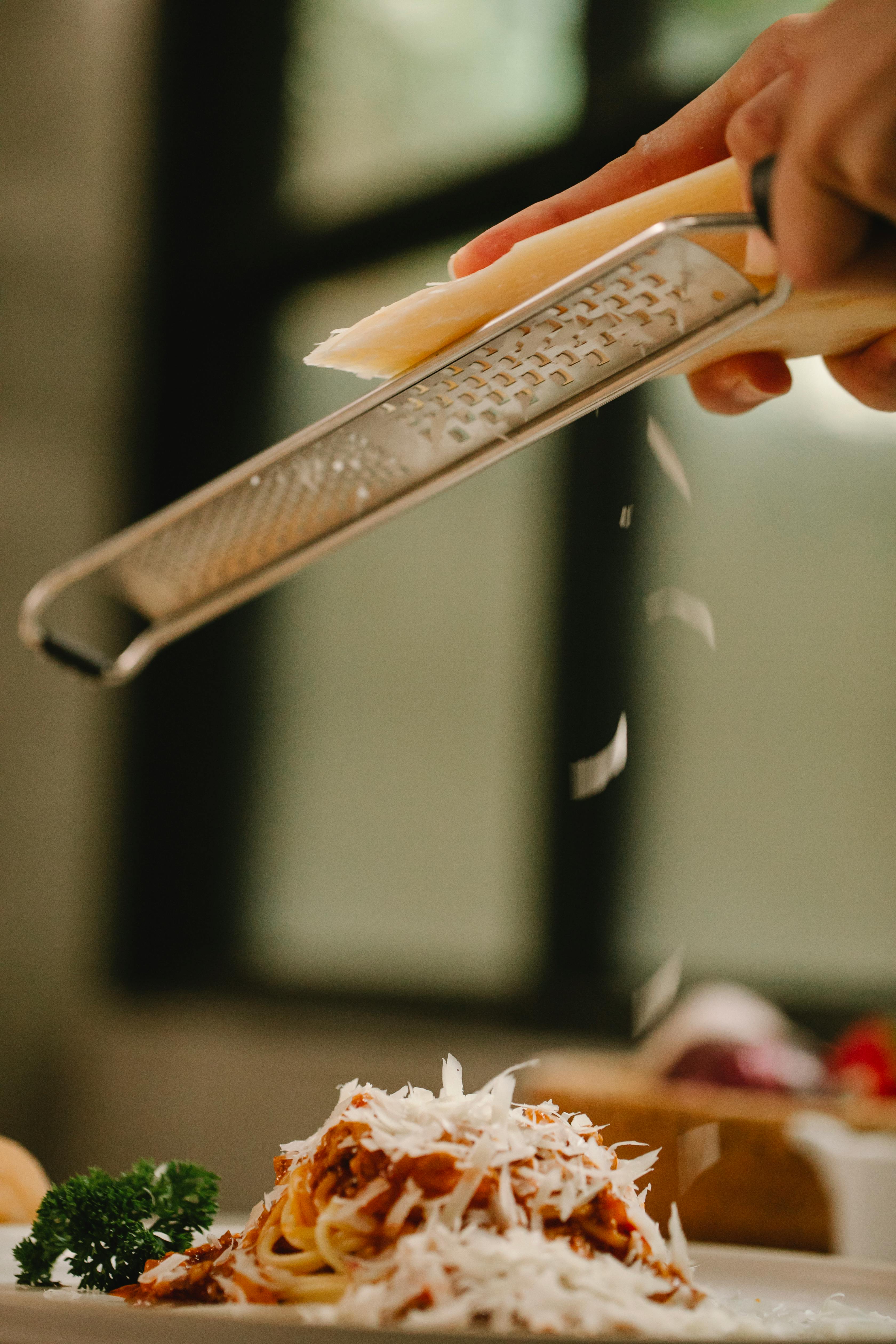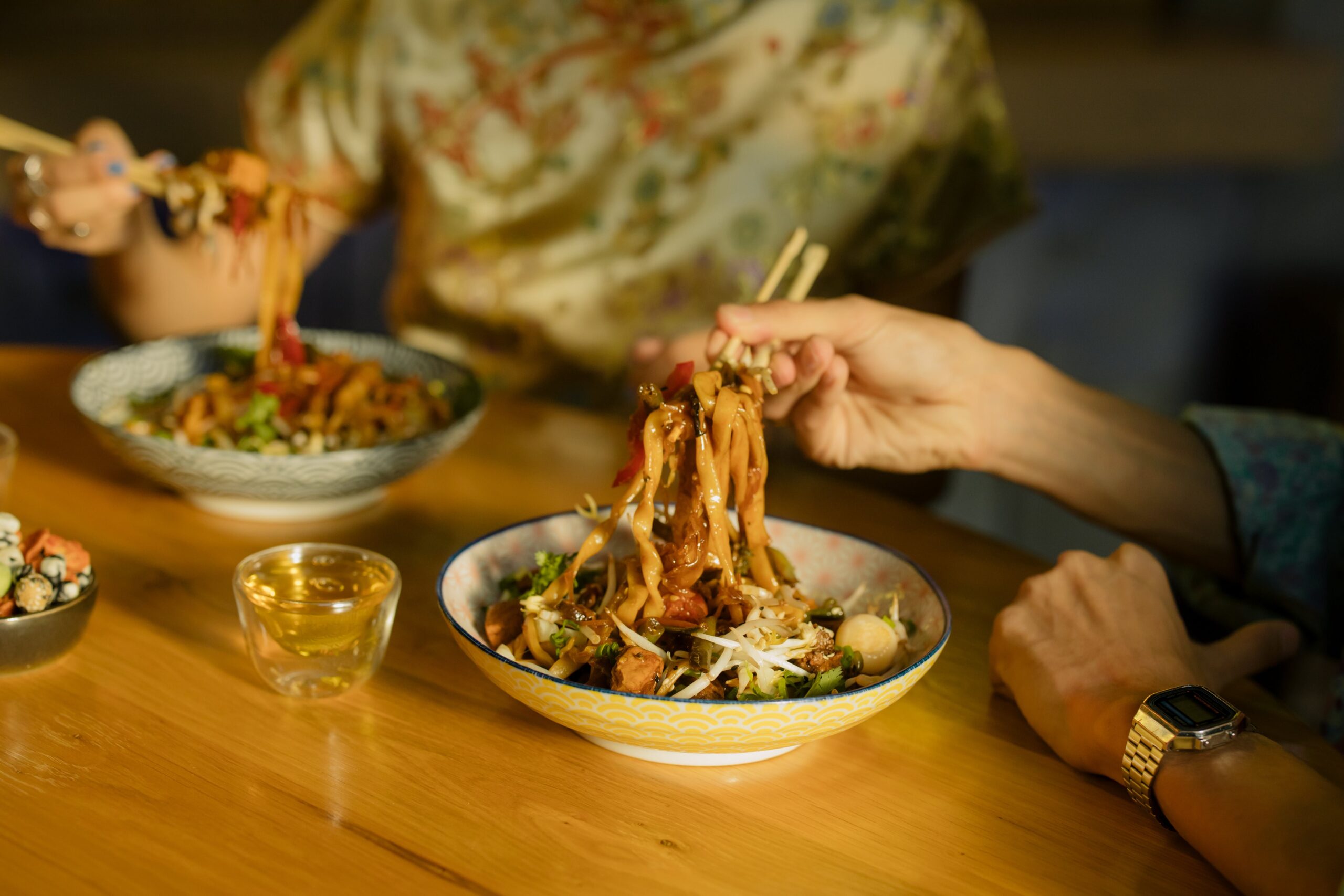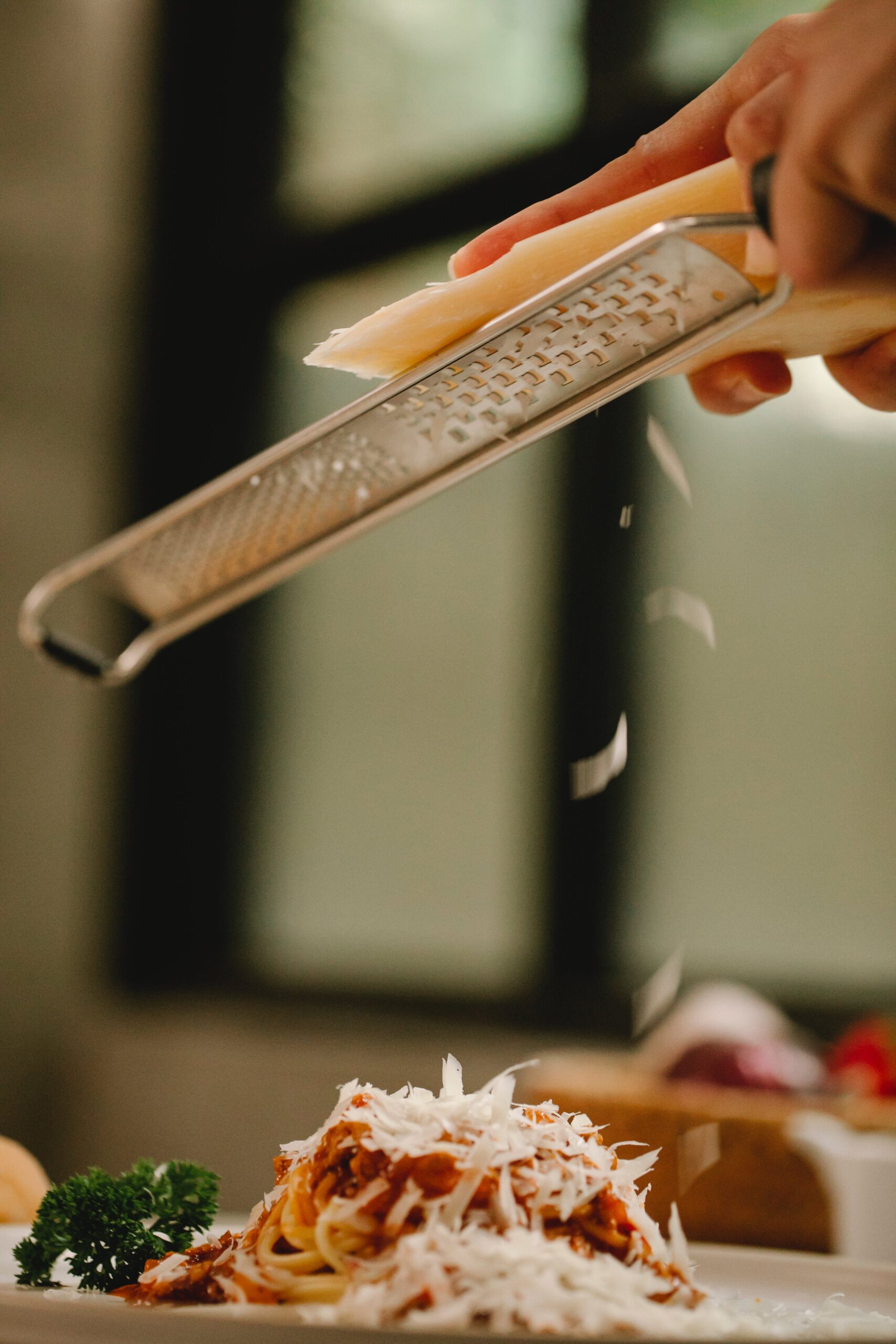Join us on a mouthwatering journey as we explore the art of Thai noodles. From the iconic Pad Thai to the fiery Drunken Noodles, these beloved dishes are a testament to the rich heritage and deep flavors of Thai cuisine. Discover the secrets behind each dish, the cultural significance they hold, and learn how these noodles have become a beloved staple in Thai culinary traditions. Get ready to tantalize your taste buds and unravel the delicious complexities of Thai noodles.

The Art of Thai Noodles
Introduction
Welcome to the wonderful world of Thai noodles! In this article, we will take you on a journey to explore the rich history, vibrant flavors, and cultural significance of Thai noodle dishes. From the iconic Pad Thai to the fiery Drunken Noodles and a variety of other popular dishes, we will delve into the techniques, ingredients, and traditions that make Thai noodles a true art form. So sit back, get ready to tantalize your taste buds, and embark on this flavorful adventure with us!
History of Thai Noodles
Thai noodles have a long and fascinating history dating back centuries. They were introduced to Thailand by Chinese immigrants who settled in the region. The use of noodles in Thai cuisine showcases the influence of Chinese culinary traditions on the vibrant Thai food culture. Over time, Thai chefs have adapted and infused their own unique flavors, creating a distinct style of noodle dishes that are loved and cherished by people around the world.
Thai Noodles in Culture
Thai noodles hold a special place in the hearts of the Thai people and have become an integral part of their culture. From lively street food stalls to elegant restaurants, the aroma of simmering noodles fills the air, enticing locals and visitors alike. Noodles are not merely a meal in Thailand; they are a culinary art form that embodies the country’s rich cultural heritage and diverse flavors. Thai noodle dishes are often shared with loved ones, enjoyed during festive occasions, and even used in symbolic rituals. The love for noodles in Thai culture runs deep, and it is no wonder why they have become such a beloved and cherished culinary tradition.
Pad Thai
Origin and Evolution
Pad Thai, the undisputed superstar of Thai noodle dishes, has an intriguing origin and evolution. It is believed to have been invented in the 1930s as part of a campaign by the Thai government to promote nationalism and a sense of Thai identity. The dish was created to embody the essence of Thai flavors and incorporate ingredients that were readily available in the country. Today, Pad Thai has evolved into a beloved Thai street food staple and a global favorite, winning the hearts and taste buds of people from all walks of life.
Ingredients
The key ingredients that give Pad Thai its unique and delicious flavor include rice noodles, tofu, shrimp or chicken, bean sprouts, eggs, garlic, shallots, and a combination of tamarind paste, fish sauce, and palm sugar to create the perfect balance of sweet, sour, and savory flavors. The dish is often garnished with crushed peanuts, lime wedges, and fresh cilantro to add a delightful crunch and burst of freshness.
Preparation Techniques
Preparing Pad Thai requires a careful balance of flavors and precise cooking techniques. The noodles are soaked in water until they reach the perfect tenderness. The tofu and protein of choice are stir-fried along with the noodles and vegetables, blending all the flavors together. The tamarind sauce, made by combining tamarind paste, fish sauce, and palm sugar, is then added to the wok. The dish is continuously tossed and cooked until the flavors meld together, resulting in a harmonious medley of textures and tastes.
Variations of Pad Thai
While the classic version of Pad Thai is a culinary masterpiece in its own right, Thai chefs have created numerous variations of this beloved dish. Some common variations include vegetarian Pad Thai, Pad Thai with crispy pork, Pad Thai with seafood, and even Pad Thai with colorful vegetable noodles. These variations allow for endless creativity and cater to a wide range of dietary preferences and taste preferences.
Serving and Presentation
Pad Thai is not only a delight for the taste buds but also a visual feast. Traditionally served on a banana leaf, the vibrant colors of the dish are accentuated by the contrast with the green backdrop. The addition of lime wedges, bean sprouts, crushed peanuts, and fresh cilantro adds an element of freshness and adds a pop of color to the plate. In Thai culture, the presentation of food is just as important as its taste, and Pad Thai is no exception.

Drunken Noodles
Meaning and Origins
Drunken Noodles, or Pad Kee Mao in Thai, is a dish that packs a punch both in terms of flavor and spice. Despite its name, Drunken Noodles do not actually contain alcohol. The name “drunken” is attributed to the theory that the dish was popular among late-night revelers who craved a spicy and flavorful meal to accompany their indulgences. The true origins of Drunken Noodles are uncertain, but they are believed to have originated in central Thailand and quickly gained popularity throughout the country.
Key Ingredients
The key ingredients that make Drunken Noodles so distinct and flavorful include wide rice noodles, Thai basil, garlic, chili peppers, fish sauce, soy sauce, and a protein of choice such as chicken, beef, or shrimp. These ingredients come together to create a harmonious balance of flavors, with the Thai basil and chili peppers lending a distinctive aroma and a fiery kick.
Cooking Process
Drunken Noodles are cooked using high heat to create a charred and slightly smoky flavor. The noodles are stir-fried along with the protein, garlic, chili peppers, and vegetables, infusing each ingredient with the intense heat and imparting a delicious smoky undertone. The dish is finished off with a combination of fish sauce and soy sauce, which adds depth and complexity to the flavor profile.
Spice Level and Flavor
One of the defining characteristics of Drunken Noodles is its fiery spice level. Thai chili peppers are used generously, making this dish a true delight for spice lovers. The heat from the peppers is balanced by the aromatic Thai basil and the umami flavor from the fish sauce. The result is a tantalizing combination of flavors that will leave your taste buds dancing.
Accompaniments
To complement the robust flavors of Drunken Noodles, it is often served with a side of fresh vegetables or a cooling condiment, such as cucumber slices or pickled radishes. These accompaniments provide a refreshing contrast to the spicy and smoky noodles, creating a well-rounded and balanced meal.
Other Popular Thai Noodle Dishes
Thai cuisine is a treasure trove of noodle dishes, and Pad Thai and Drunken Noodles are just the tip of the iceberg. Here are some other popular Thai noodle dishes that are worth exploring:
Pad See Ew
Pad See Ew is another classic Thai noodle dish made with wide rice noodles stir-fried in soy sauce, garlic, and a protein of choice, such as chicken or beef. The dish is often served with Chinese broccoli and a sprinkle of white pepper, giving it a distinct flavor profile.
Tom Yum Noodle Soup
Tom Yum Noodle Soup combines the flavors of the iconic Thai soup, Tom Yum, with rice noodles. This aromatic and spicy soup is typically made with shrimp, lemongrass, galangal, kaffir lime leaves, and chili peppers, creating a soothing and flavorful broth that is perfect for slurping.
Guay Teow
Guay Teow is a popular street food dish in Thailand, consisting of thin rice noodles served in a flavorful broth with a variety of toppings. The toppings can range from slices of pork, beef, or chicken to meatballs and crispy pork rinds. Guay Teow is a comforting and satisfying meal that can be enjoyed any time of day.
Khao Soi
Hailing from northern Thailand, Khao Soi is a rich and aromatic curry noodle soup made with egg noodles, coconut milk, and a combination of spices like turmeric and curry paste. Topped with crispy egg noodles, pickled mustard greens, shallots, and lime wedges, Khao Soi boasts a complex flavor profile that will transport you to the bustling streets of Chiang Mai.
Kuay Tiew Reua
Kuay Tiew Reua, also known as Boat Noodles, is a popular Thai street food dish that originated in Bangkok’s floating markets. This dish features pork or beef broth infused with aromatic herbs, thin rice noodles, and a combination of meatballs, pork slices, and crispy pork cracklings. Garnished with bean sprouts, Chinese celery, and a squeeze of lime, Kuay Tiew Reua is a flavor-packed culinary experience.
Kuaytiaw Khua Kai
Kuaytiaw Khua Kai is a stir-fried noodle dish that showcases the Chinese influence on Thai cuisine. Thick rice noodles are stir-fried with chicken, dark soy sauce, garlic, and Chinese broccoli, resulting in a smoky and savory delight that will satisfy any noodle craving.
Khanom Jeen Nam Ya
Khanom Jeen Nam Ya is a unique Thai noodle dish made with fermented rice noodles topped with a rich and flavorful curry sauce. The sauce is typically made with fish and coconut milk, creating a creamy and fragrant combination that is then served with an array of fresh vegetables and herbs.
Mi Krop
Mi Krop is a crispy noodle dish that is often enjoyed as a snack or appetizer. Thin rice noodles are deep-fried until they become crispy and are then stir-fried with a tangy and sweet sauce made from tamarind, palm sugar, fish sauce, and chili paste. Mi Krop is a crunchy and addictive treat that will leave you wanting more.
Kway Chap
Kway Chap is a hearty and flavorful noodle soup made with wide rice noodles served in a fragrant broth flavored with herbs and spices. The dish is typically topped with a variety of proteins, such as braised pork belly, pork intestines, tofu, or eggs. Kway Chap is a popular breakfast dish in Thailand, offering a comforting and satisfying start to the day.
Wun Sen
Wun Sen, also known as glass noodles or bean thread noodles, is a versatile and delicate noodle that is often used in Thai cuisine. These translucent noodles are made from mung bean starch and can be found in a variety of dishes, from salads to stir-fries. Their unique texture and ability to absorb flavors make them a favorite among Thai noodle lovers.

Noodle Types Used in Thai Cuisine
Thai cuisine boasts a wide variety of noodles, each with its own unique texture and characteristics. Here are some of the most commonly used noodle types in Thai cuisine:
Sen Yai
Sen Yai are wide rice noodles that are commonly used in dishes like Pad Thai and Pad See Ew. These soft and chewy noodles absorb flavors beautifully, making them the perfect canvas for various sauces and stir-fries.
Sen Mee
Sen Mee, also known as rice vermicelli, are thin rice noodles that are often used in stir-fried dishes, soups, and spring rolls. They have a delicate texture and cook quickly, making them a versatile option in Thai cooking.
Wun Sen
Wun Sen, or glass noodles, are made from mung bean starch and have a transparent appearance when cooked. These noodles have a slightly chewy and slippery texture, making them a popular choice in dishes like salads and stir-fries.
Kway Teow
Kway Teow are flat rice noodles that are a staple in many Thai noodle dishes. They have a soft and chewy texture that pairs well with both broth-based and stir-fried dishes.
Bamboo Shoot Noodles
Bamboo Shoot Noodles, or Ruam Mit, are a unique type of noodle made from bamboo shoots. These noodles have a distinctive texture and add a subtle earthy flavor to dishes.
Kanom Jeen
Kanom Jeen are fermented rice noodles that are often used in dishes like Khanom Jeen Nam Ya and Nam Ngiao. The fermentation process gives these noodles a tangy flavor and slightly chewy texture, making them a beloved choice in Thai cuisine.
Kuaytiaw
Kuaytiaw, or rice sticks, are thin noodles made from rice flour. These noodles are commonly used in soups and stir-fry dishes. They cook quickly and have a tender and slightly chewy texture.
Mi Krop
Mi Krop, or crispy rice noodles, are deep-fried noodles that are commonly used in dishes like Mi Krop and Pad Mi Krop. These crispy noodles add a delightful crunch and texture to dishes, making them a popular choice for salads and stir-fries.
Traditional Thai Noodle Techniques
Thai noodle dishes are prepared using a variety of cooking techniques, each aimed at maximizing flavor and texture. Here are some traditional Thai noodle techniques:
Stir-Frying
Stir-frying is a common cooking technique used in Thai noodle dishes. The high heat and quick cooking time allow the ingredients to retain their vibrant colors, flavors, and textures. Stir-frying noodles with aromatic herbs, proteins, and a combination of sauces creates a delightful medley of flavors.
Boiling and Blanching
Boiling and blanching are techniques often used when preparing noodle soups or when cooking noodles that require a softer texture. Noodles are cooked in boiling water until they reach the desired tenderness and are then drained and rinsed with cold water to stop the cooking process and maintain their texture.
Steam Cooking
Steam cooking is a gentle and delicate cooking technique that is used to cook certain types of noodles. By steaming the noodles, they become soft and springy, making them perfect for dishes like Kanom Jeen Nam Ya or Khanom Chin.
Deep-Frying
Deep-frying is a technique used to achieve crispy noodles, such as Mi Krop. Noodles are deep-fried until they become golden brown and crispy. The result is a delightful contrast of textures, with the exterior crispy and the interior tender.
Grilling
Grilling noodles adds a smoky and charred flavor to certain dishes. Noodles, such as Khao Soi or Kuay Tiew Reua, may be briefly grilled before being added to the dish, enhancing the overall flavor profile and adding an irresistible smoky aroma.
Secret Ingredients and Flavor Profiles
Thai cuisine is known for its complex and harmonious flavor profiles. Here are some secret ingredients that give Thai noodle dishes their distinct taste:
Tamarind
Tamarind is a key ingredient in Thai cuisine, imparting a sweet and tangy flavor to dishes like Pad Thai and Mi Krop. Tamarind paste is often used as a base for sauces, creating a perfect balance of sweet and sour flavors.
Fish Sauce
Fish sauce, made from fermented fish, is a staple ingredient in Thai cooking. It adds a savory and umami flavor, enhancing the taste of dishes like Pad See Ew and Drunken Noodles. Fish sauce is used sparingly but plays a crucial role in achieving the authentic taste of Thai noodle dishes.
Palm Sugar
Palm sugar, derived from the sap of palm trees, adds a natural sweetness and caramel flavor to Thai noodle dishes. It serves as a balance to the sour and spicy flavors found in many Thai dishes, creating a harmonious blend of taste.
Galangal
Galangal is a root similar to ginger but with a distinct flavor. It adds a subtle, citrusy, and spicy note to Thai noodle dishes, such as Tom Yum Noodle Soup. Galangal is an essential ingredient in many Thai soups and curries, contributing to their unique taste.
Lemongrass
Lemongrass adds a refreshing and citrusy flavor to Thai noodle dishes. Its subtle tanginess and delicate fragrance elevate the overall taste profile of dishes like Tom Yum Noodle Soup and Khao Soi, giving them a unique and memorable taste.
Thai Basil
Thai Basil is a fragrant herb that is commonly used in Thai cuisine, including noodle dishes like Pad Kee Mao. It has a distinct aroma and flavor, with hints of mint and anise. Thai Basil adds a fresh and aromatic touch to Thai noodle dishes, elevating them to another level of deliciousness.
Kaffir Lime Leaves
Kaffir Lime Leaves are highly valued in Thai cuisine for their strong citrusy fragrance and flavor. They are often added to noodle soups or stir-fried dishes to impart a refreshing and aromatic note. Kaffir Lime Leaves play a significant role in creating the signature taste of Thai cuisine.
Chili
Chili peppers are a common feature in Thai cuisine, providing a spicy kick to dishes like Drunken Noodles and Pad Thai. Thai cuisine is known for its vibrant and fiery flavors, and chili peppers contribute to that distinctive heat that tantalizes the taste buds.
Shrimp Paste
Shrimp paste, known as kapi, is a pungent and flavorful ingredient used in Thai cooking. It is often added to dishes like Pad Thai and Pad Kee Mao to enhance the umami flavor and provide a depth of taste. Shrimp paste may be an acquired taste, but it is a crucial component of many Thai noodle dishes.
Roasted Peanuts
Roasted peanuts are a popular garnish in Thai noodle dishes. They add a delightful crunchy texture and a subtle nuttiness that complements the overall flavor profile. Crushed peanuts are often sprinkled on top of Pad Thai and Mi Krop, adding a deliciously addictive element to the dish.
Accompaniments and Garnishes
Thai noodle dishes are often served with a variety of accompaniments and garnishes to enhance the flavors and textures. Here are some common accompaniments and garnishes found in Thai noodle cuisine:
Bean Sprouts
Bean sprouts are a classic accompaniment to many Thai noodle dishes. They provide a refreshing crunch that complements the soft noodles and adds a touch of freshness.
Lime Wedges
Lime wedges are commonly served with Thai noodle dishes to add a burst of citrusy flavor. Squeezing lime juice over the noodles enhances the overall taste and brightens the dish.
Chili Flakes and Sauce
For those who love an extra kick of heat, chili flakes and sauce are often served as accompaniments. They allow diners to customize the level of spiciness according to their personal preferences.
Cilantro
Cilantro is a popular herb used in Thai cuisine and is often used as a garnish in noodle dishes. Its fresh and bright flavor adds a delightful herbal note to the dish.
Green Onions
Green onions, also known as scallions, are often sprinkled on top of Thai noodle dishes to add a hint of onion flavor and a pop of color.
Fried Garlic
Fried garlic is a crunchy and aromatic garnish that adds depth of flavor and texture to Thai noodle dishes. Its rich and slightly sweet taste enhances the overall taste experience.
Thai Chilies
Thai chilies, known for their fiery heat, are often served as an accompaniment for those who enjoy a spicy challenge. These small but mighty chilies can take a dish to the next level of spiciness.
Coriander Seeds
Coriander seeds are sometimes added as a garnish to Thai noodle dishes, imparting a subtle earthy and citrusy flavor. They provide a nice contrast to the other bold flavors and textures present in the dish.
Crushed Peanuts
Crushed peanuts are a classic garnish in Thai cuisine, adding a satisfying crunch and nutty flavor to noodle dishes like Pad Thai and Mi Krop. They create a delightful contrast of textures.
Fried Egg
In some noodle dishes, such as Pad Kee Mao, a fried egg is served on top as a garnish. The creamy yolk and crispy edges of the egg add richness and provide a delightful addition to the overall dish.
The Cultural Significance of Thai Noodles
Thai noodles hold great cultural significance in Thai society and are deeply intertwined with the country’s traditions and beliefs. Here are some ways in which Thai noodles are culturally significant:
Noodle Symbolism
In Thai culture, noodles symbolize longevity and good fortune. Long noodles are often served during birthdays and special occasions to symbolize a long and prosperous life.
Noodle Rituals and Superstitions
In certain Thai communities, there are rituals and superstitions associated with eating noodles. For example, it is believed that slurping noodles loudly brings good luck and prosperity, while cutting noodles with a knife is considered bad luck.
Noodles in Celebrations and Festivals
Noodles play a prominent role in Thai celebrations and festivals. During Chinese New Year, for instance, families gather to make and share noodles as a way to welcome good luck and fortune for the coming year.
Noodles as Comfort Food
Thai noodles are often regarded as comfort food, offering warmth, familiarity, and a sense of home. Whether it’s a bowl of soothing noodle soup or a plate of stir-fried noodles, these dishes have the power to evoke feelings of comfort and nostalgia.
Noodles in Street Food Culture
Thai noodle dishes can be found in abundance in the vibrant street food culture of Thailand. From bustling night markets to humble food stalls, the fragrance of sizzling noodles and the sound of spatulas hitting woks fill the air, inviting locals and tourists to indulge in the diverse and flavorful world of Thai noodles.
Conclusion
Thai noodles are a true work of culinary art, with their vibrant flavors, diverse range of dishes, and cultural significance. From the iconic Pad Thai to the fiery Drunken Noodles and an array of other popular noodle creations, Thai cuisine offers a treasure trove of flavors and textures that will tantalize your taste buds and transport you to the vibrant streets of Thailand. Whether enjoyed as a comforting bowl of soup or a stir-fried explosion of flavors, Thai noodles continue to captivate and delight food lovers around the world. So next time you find yourself craving a truly unforgettable culinary experience, immerse yourself in the art of Thai noodles, explore the vast array of flavors and techniques, and savor every mouthful as you embark on a journey through the rich tapestry of Thai cuisine.

